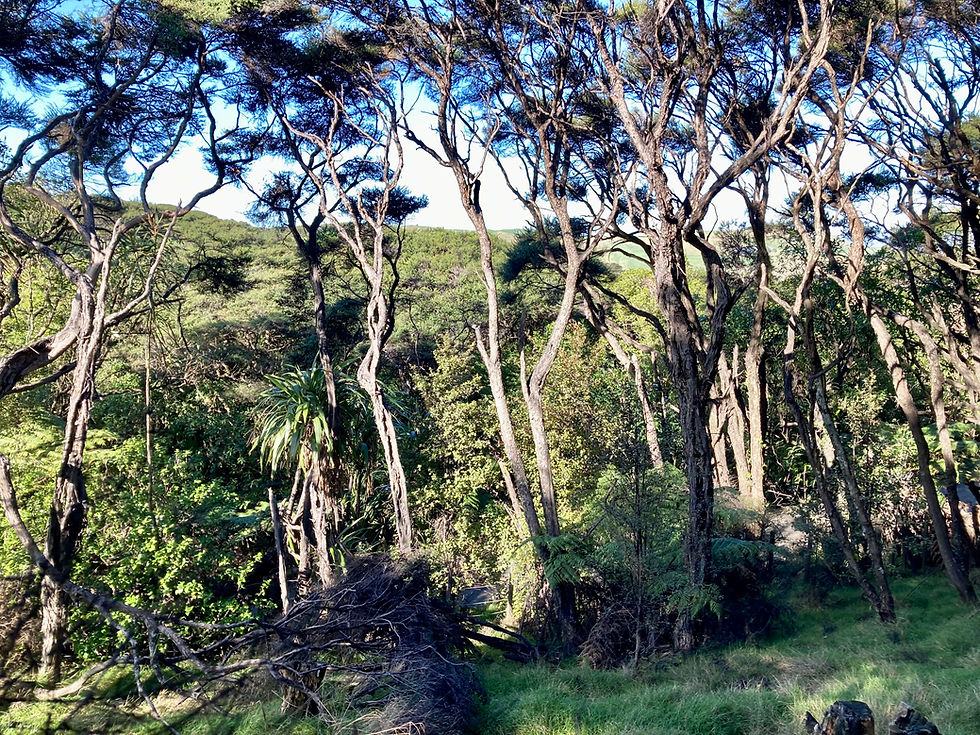Mamaku, the giant umbrella of the forest - New Zealand's largest fern species.
- Heda Landscape Design Ltd.

- Apr 6
- 2 min read
Mamaku, our tallest tree fern, with immense fronds up to 6 metres long, can be referred to as the giant umbrella of the forest. It is not uncommon for this ancient plant, dating back to the time of the dinosaurs, to reach heights of 20 meters.
Spheropteris medullaris (syn. Cyathea medullaris), also known as the black tree fern, is easily recognised by its jet-black frond stalks (stipes) covered in black scales and its trunk displaying distinctive hexagonal stipe scars (where the old fronds have fallen off).

We have only recently begun to understand the significant role it plays in forest regeneration. Mamaku is often the first to appear in areas where a forest has been cleared, aiding in landscape recovery after disruption. It is commonly found on wetter, steeper south-facing sites, where it quickly forms short-lived forests. Beneath their dark canopies, sensitive broad-leaved species such as kohekohe (Dysoxylum spectabile), pukatea (Laurelia novae-zelandiae), tawa (Beilschmiedia tawa), and miro (Prumnopitys ferruginea) can grow and eventually replace it.
Mamaku, a hydrophyte (a plant species adapted to thrive in water or wet conditions), typically favours moist environments and can often be observed growing along streams. It is predominantly found in broadleaved forests, but also grows in podocarp, beech, and kānuka forests.
Its trunk acts as an aerial nursery for seedlings of several native plant species. Often in the forest, you will see remnants of mamaku acting as a support for a newly grown tree that has taken its place.


The decomposing fronds of mamaku enrich the soil, benefiting nearby forest plants and aiding nutrient-hungry seedlings in growing into large trees. Additionally, the fibrous trunk of the mamaku provides an ideal habitat for various insects.
One of Aotearoa's rarest bird species, the Hihi or stitchbird, uses mamaku fibres collected from the kōrau (the spiral-shaped new fern frond) to build its nests and blanket its eggs.


In addition to aiding land regeneration and supporting various plant and animal species, mamaku also offers calming medicinal benefits for humans.
In Rongoā Māori, the traditional Māori healing system, different parts of mamaku are used to treat skin conditions, rashes and ulcers, cure internal parasites, soothe sore throats and assist with the post-partum recovery.
Source: Nature Guide to the New Zealand Forest (Dawson, J. & Lucas, R. 2000, Random House,New Zealand); The Meaning of Trees (Vennel, R. 2019 Harper Collins Publishers, New Zealand); NZ Forest and Bird authoritative website https://www.forestandbird.org.nz




